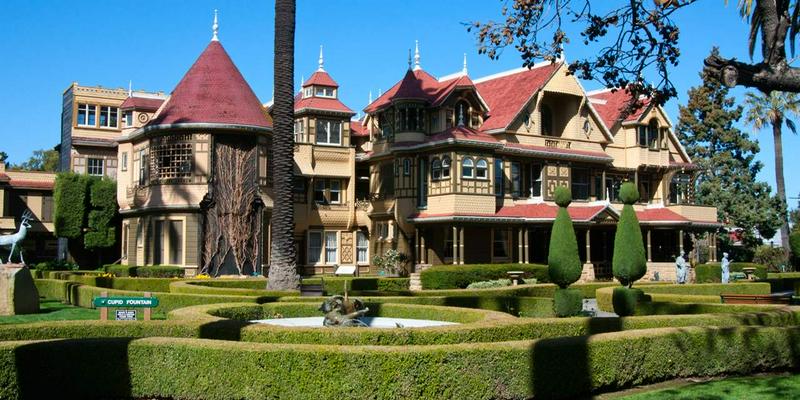Sarah Winchester’s Mystery House
By | March 8, 2019

It was a simple eight-room farmhouse when it was purchased by Sarah Winchester, the heiress to the Winchester fortune. The Winchester Repeating Arms Company was founded by Sarah’s late husband’s father, Oliver Winchester, who died in 1880. Sarah inherited the fortune after her husband, William Winchester, died of tuberculosis in 1881. Their only daughter had died one month after being born, leaving Sarah as the sole heir. She moved from Connecticut to San Jose in 1885 and bought the farmhouse in 1886. Construction began that year and continued twenty-four hours a day, three hundred sixty-five days a year until her death in 1922.

The reasons behind the continuous building have become one of America’s most well-known ghost stories. According to legend, Sarah visited a psychic who told her that the deaths of her husband and child were the result of a curse on the Winchester family. The curse was enacted by the ghosts of all the victims killed by the Winchester rifles and the only way Sarah could avoid succumbing to it was by continuing to build. Some believe that the blueprints for her additions came from the spirits themselves as Sarah was alleged to have seances in which she communicated with the ghosts.

While there is no documented evidence that Sarah believed herself to be haunted or that she communicated with spirits, there is no shortage of anecdotal evidence of spiritual encounters from visitors to the Winchester Mystery House today. Employees of the tourist attraction claim to have heard their name whispered in the hallways. Visitors claim to have felt something brush against them and a tour guide claims to have tripped and had a spirit ask if she were okay. There are also reports of “Clyde the wheelbarrow ghost” living in the basement.


According to a 1924 issue of Popular Mechanics, Sarah Winchester spent in the neighborhood of five million dollars building the house. That is the equivalent of about seventy million in today’s economy. However, curse or no curse, the money was not wasted. She was reported to have paid her construction workers triple the going rate as well as to have provided housing for them. So while she may have been eccentric, at least she put her eccentricity to good use, providing construction workers with well-paying jobs for forty years. Even today, nearly one hundred years after her death, she continues to indirectly provide jobs to the tour guides hired to escort visitors through the fascinating house she created.

